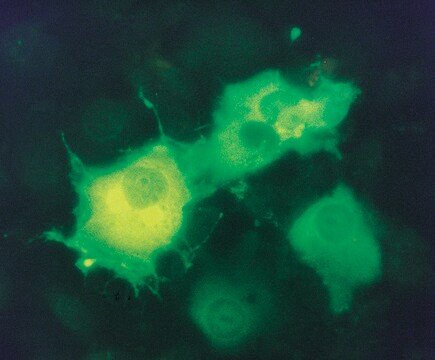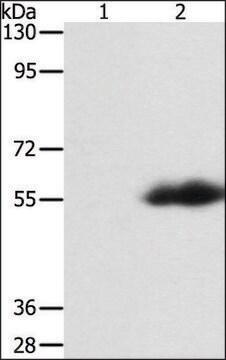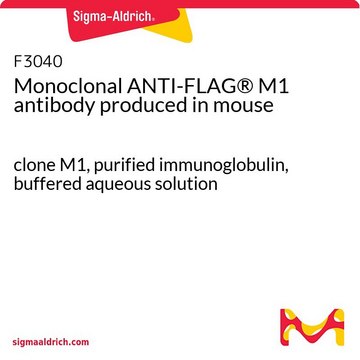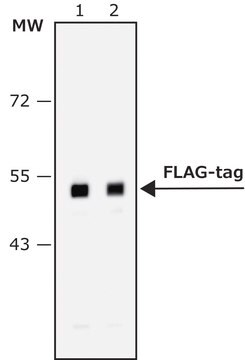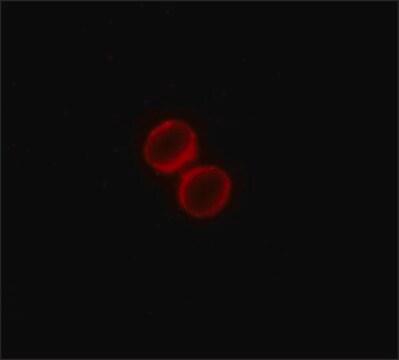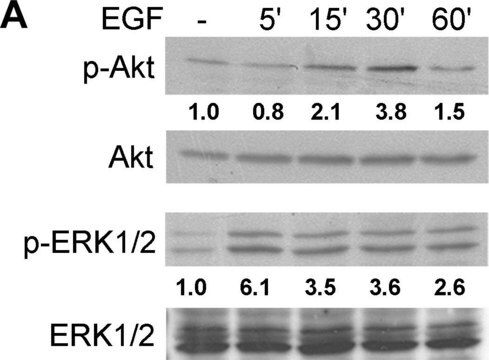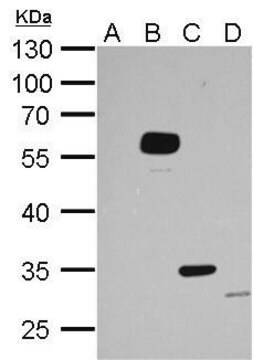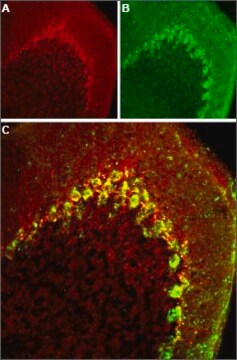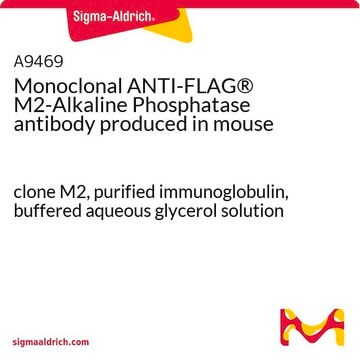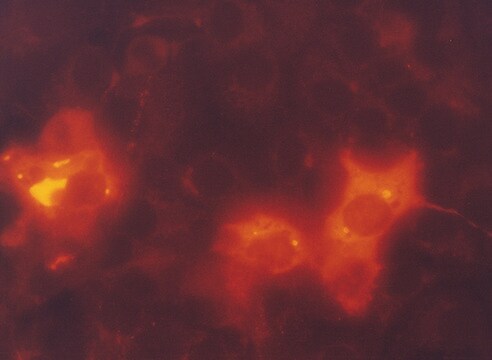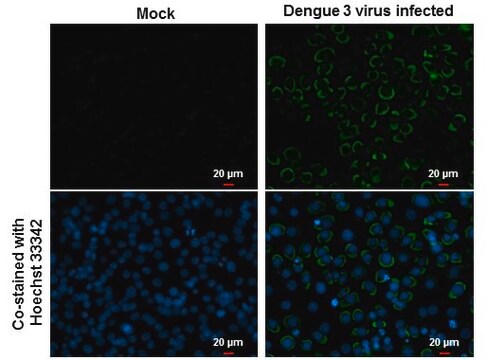SAB4200071
ANTI-FLAG® antibody, Rat monoclonal
clone 6F7, purified from hybridoma cell culture
Synonym(s):
Anti-ddddk, Anti-dykddddk
About This Item
WB
western blot: 0.5-1.0 μg/mL using extracts of transiently transfected cells expressing C-terminal-FLAG-tagged protein
Recommended Products
biological source
rat
conjugate
unconjugated
antibody form
purified from hybridoma cell culture
purified immunoglobulin
antibody product type
primary antibodies
clone
6F7, monoclonal
form
buffered aqueous solution
species reactivity
all
technique(s)
immunoprecipitation (IP): 2.5-5.0 μg using lysates of transiently transfected cells expressing C-terminal-FLAG-tagged protein
western blot: 0.5-1.0 μg/mL using extracts of transiently transfected cells expressing C-terminal-FLAG-tagged protein
isotype
IgG1
immunogen sequence
(DYKDDDDK)
shipped in
dry ice
storage temp.
−20°C
General description
Monoclonal Anti-FLAG® recognizes N-terminal,
C-terminal and internal Flag-tagged fusion proteins. The product is especially recommended for identifying C-terminal FLAG®-tagged fusion proteins.
Epitope tags provide a method to localize gene products in a variety of cell types, study the topology of proteins and protein complexes, identify associated proteins, and characterize newly identified, low abundance, or poorly immunogenic proteins when protein specific antibodies are not available. Tagging with the FLAG® peptide sequence may be done at the N-terminus, N-terminus preceded by a methionine residue, C-terminus, or at internal positions of the target protein. FLAG may also be placed in associationith other tags. The small size of the FLAG® tag or sequence and its high hydrophilicity tend to decrease the possibility of interference with the protein expression, proteolytic maturation, antigenicity, and function.
The N-terminal FLAG® peptide sequence contains a unique enterokinase cleavage site allowing it to be completely removed from the purified fusion proteins. Cleavage of the C-terminal FLAG® peptide from a fusion protein catalyzed by Cu2+ ions has been reported. A sequence motif with five out of eight amino acid residues identical to the FLAG peptide is found in both rat and mouse Mg2+dependent protein b-phosphatase, as well as in the human and bovine enzyme.
Immunogen
DYKDDDDK
Application
- chromatin immunoprecipitation (ChIP)
- western blotting
- coimmunoprecipitation
- flow cytometric analysis
Physical form
Legal Information
Not finding the right product?
Try our Product Selector Tool.
Storage Class Code
10 - Combustible liquids
Flash Point(F)
Not applicable
Flash Point(C)
Not applicable
Choose from one of the most recent versions:
Already Own This Product?
Find documentation for the products that you have recently purchased in the Document Library.
Customers Also Viewed
Our team of scientists has experience in all areas of research including Life Science, Material Science, Chemical Synthesis, Chromatography, Analytical and many others.
Contact Technical Service


